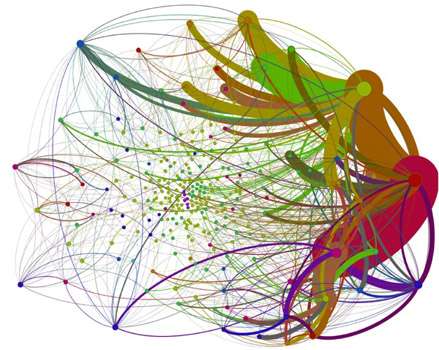Conflicts in Wikipedia now modelled by statistical physicists

Information and communication technology has enabled us to solve complex problems in collaboration across the world. Everything from wiki-based platforms to open software development all the way to the experiments in CERN has benefited from advances in ICT. Not only have unprecedented forms of synergy emerged, but also inevitable clashes of opinions between large numbers of individuals.
Physicists in Aalto University Department of Biomedical Engineering and Computational Science have succeeded in mathematically modelling the dynamics of the birth and persistence of conflicts and their resolution in the online encyclopaedia Wikipedia. The article presenting the study has now been published in the journal Physical Review Letters.
How Wikipedia editors dissent and come together
The group's model describes the spontaneous dynamics of the clashes of opinions in Wikipedia in three types of scenarios. Firstly, it shows how the increasing number of new editors to an article gives rise to controversy. The model also accounts for different levels of tolerance in editors' sensitivity towards certain topics. Moreover, it captures states of uninterrupted controversy where sensitive contributors cannot stand even small deviations from their opinions.
Eventually even strongly opposing views converge over time, even without direct interaction between dissenting contributors. The shared medium takes care of this.
"The presence of the Wikipedia article itself brings the opinions of individuals together and helps the convergence process. Without an article, on which to work collectively, groups with different opinions could stay separate and ignore each other," explains Gerardo Iñiguez, doctoral student in the group and in Aalto University Department of Biomedical Engineering and Computational Science.
Modelling the Darwinian wonder of human collaboration
Modelling cooperation in Wikipedia comes down to a central issue of interest in contemporary physics: the competition of local and global interactions in systems of collective phenomena. It exists everywhere from chemical reactions to the formation of sand dunes.
"Usually sand grains only collide with neighbouring grains, but wind can project them into the air and make them hit faraway grains. This long-range global interaction creates a ripple pattern that does not appear in the absence of wind," compares Iñiguez.
The group's model follows ideas in the same spirit.
"In Wikipedia local interactions occur between editors modifying their opinions, while global interactions are those of the editors with an article. In the presence of an article a collective behaviour appears – conflict followed by consensus – not unlike in chemical synchronisation and sand ripples. "
Efficiency in collaborative value production
The group sees great potential in the model to help understand value production in collaborative environments. With further refinements, they seek to manage and modify the mechanisms of editorial processes and tackle the complexity of massive cooperation in Wikipedia.
"We could capture the heterogeneity among editors and their different areas of interest, attitudes and tolerance levels, and also the hierarchy between editors. In our model all agents are the same, but in Wikipedia some editors have more privileges, usually based on their experience."
"We could explain the recruitment and the dropping out of editors, or the promotion process of editors and the ways they gain public authority."
More information: Physical Review Letters: Opinions, Conflicts and Consensus: Modeling Social Dynamics in a Collaborative Environment. prl.aps.org/abstract/PRL/v110/i8/e088701
Journal information: Physical Review Letters
Provided by Aalto University


















